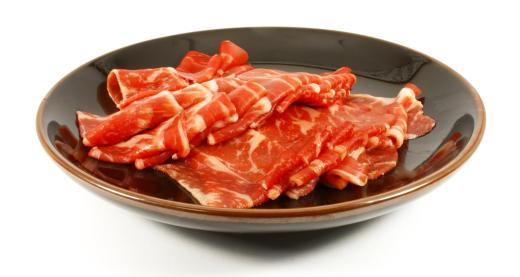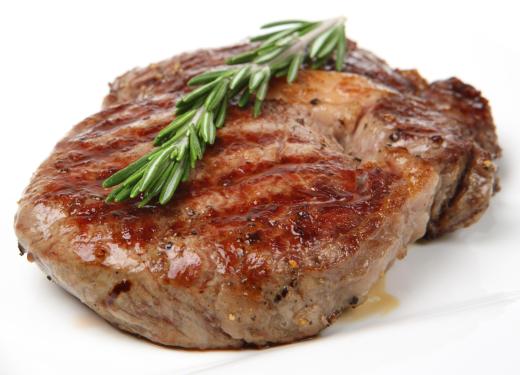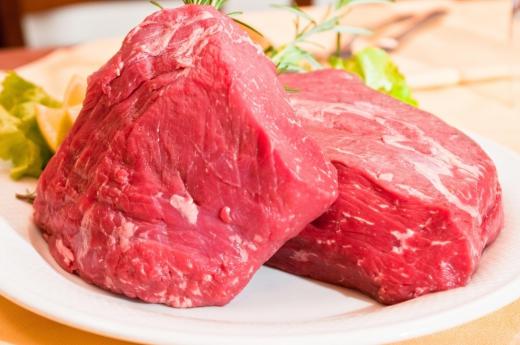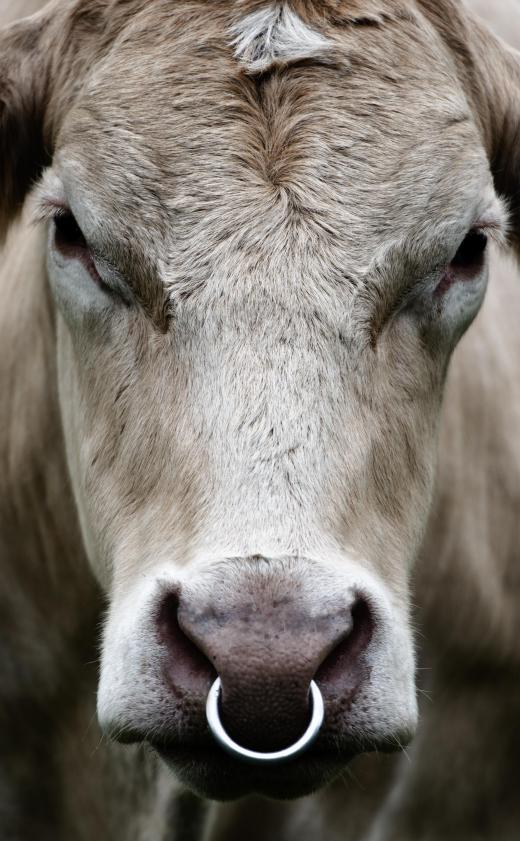Beef meat processing involves a number of steps to prepare cuts of meat and package them for delivery while maintaining safe conditions to limit the risk of food-borne illness. It is possible to slaughter and process cattle at home for home use, or to hire a mobile butcher to perform beef meat processing on site. In other cases, farmers ship live cattle to a processing facility that can handle large volumes of animals at once. Government agencies regulate such facilities and monitor them for safety and health violations.
The first step in beef meat processing is slaughter. Before slaughter, a technician examines the animal to make sure it is fit for human consumption. Slaughtering facilities do not handle sick cattle and may be banned by law from handling downer cattle and other animals with obvious health problems. If the animal appears healthy, a variety of techniques can be used to slaughter it and quickly bleed it to prevent spoilage.

After bleeding, beef meat processing can include removing the hide along with waste products like the intestines, and chopping the carcass into component parts. The level of processing available depends on the facility. Some facilities simply remove the bottoms of the legs and the head, clean out the internal viscera, and chop cattle in half for shipment to another location. Others may butcher the carcasses into component cuts like ribs, flank steaks, and so forth.

Production facilities need to maintain cool, clean conditions for beef meat processing. The process can include aging to allow the meat to mature before it is cut up and sold, as fresh meat can sometimes have a raw, bloody taste even after thorough cooking. Facility workers typically cover their hair, wear gloves, and take other steps to limit contamination. Processed meat must be kept cool after packaging to inhibit bacterial growth.

Some beef meat processing can include chemical treatments, irradiation, or other measures intended to limit the chance of contamination in the meat. Agricultural inspectors also grade the meat on the basis of quality, which determines the sale value. Inspectors can also periodically examine the facility to make sure workers comply with the law. Health code violations like warm temperatures, improper head coverings, and other issues can lead to a facility shutdown until the issue can be remedied.

For home beef meat processing, less stringent measures are necessary. Households can handle their meat in a variety of ways to meet their needs and take some basic safety measures to keep the meat clean and prevent spoilage. These can include smoking, salting, or pickling to preserve meat, as well as freezing cuts for later use.
Ever since she began contributing to the site several years ago, Mary has embraced the exciting challenge of being a About Mechanics researcher and writer. Mary has a liberal arts degree from Goddard College and spends her free time reading, cooking, and exploring the great outdoors.

